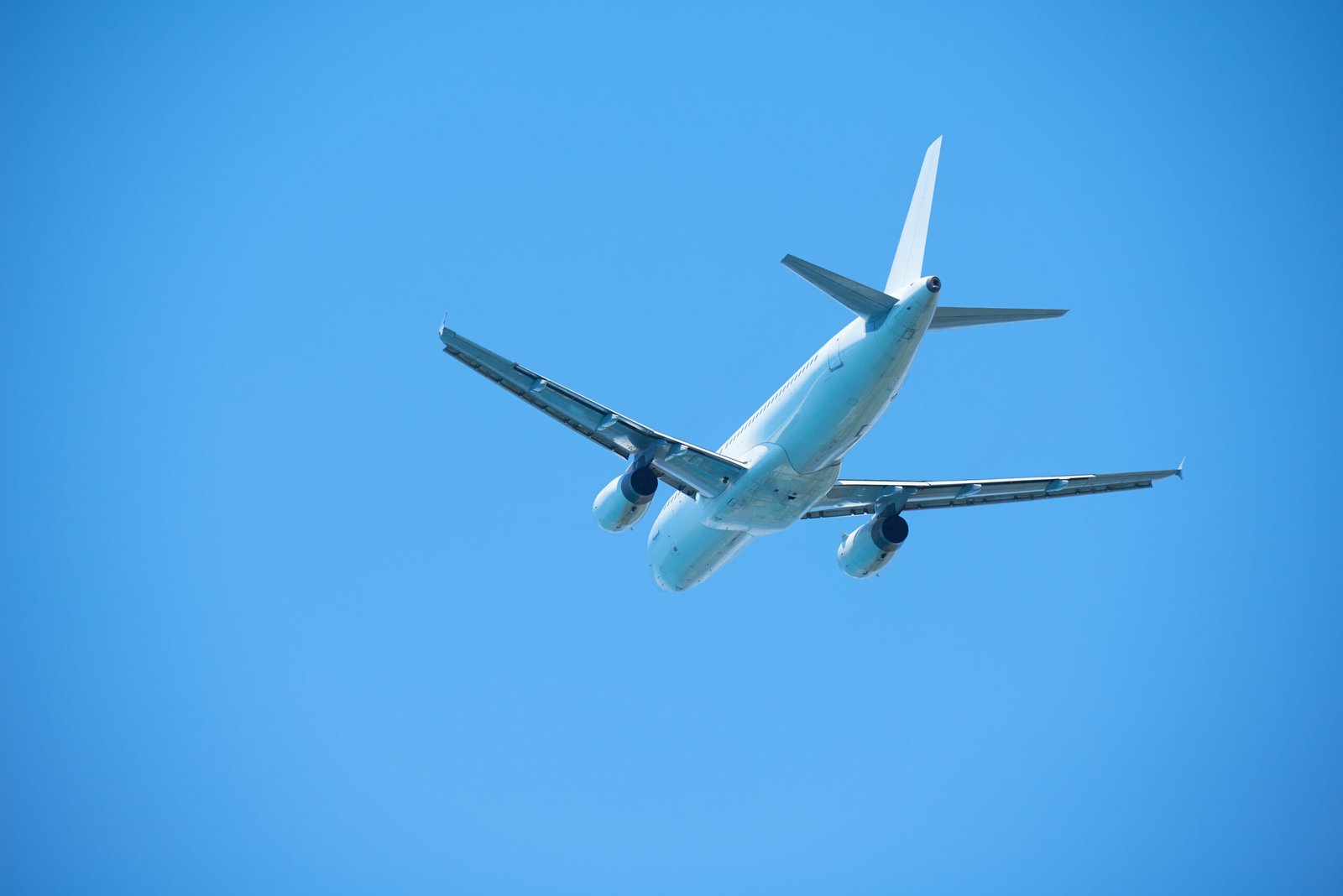Aviation Social Media
The Future of Flight: Innovations Transforming the Aviation Industry
As we soar into a new era of aviation, the landscape is evolving rapidly, driven by groundbreaking innovations and advancements. The future of flight is not only about sleek aircraft and high speeds; it’s also about training the next generation of aviators, sharing knowledge through various platforms, and harnessing technology to enhance safety and efficiency. Let’s delve into the different facets transforming this dynamic industry.
### Aviation Schools: A Spectrum of Courses
To navigate the skies effectively, aspiring pilots need comprehensive education tailored to their goals. Aviation schools offer a multitude of courses that cater to diverse interests and career paths.
1. **Private Pilot Training**: This foundational course introduces students to essential flying skills. It prepares them for private pilot certification, allowing them to fly solo or with passengers under specific regulations.
2. **Commercial Pilot Programs**: Once students obtain their private license, many opt for commercial training to gain professional piloting credentials. These programs provide advanced instruction on navigation, flight maneuvers, and operational procedures.
3. **Air Traffic Control (ATC) Training**: Not all aviation careers involve flying! ATC courses prepare individuals to manage air traffic safely and efficiently using cutting-edge technology.
4. **Aviation Management**: For those interested in the business side of aviation, management programs focus on airport operations, airline management, logistics, and regulatory compliance.
5. **Maintenance Engineering**: Recognizing the importance of aircraft upkeep, these technical courses equip students with skills needed for aircraft repair and maintenance—ensuring safety in every flight.
### A Wealth of Information: Aviation Blogs and Websites
In today’s digital age, staying informed is easier than ever thanks to a plethora of blogs, websites, and social media channels dedicated to aviation enthusiasts:
**Airline Reporter**: This blog covers industry news with a unique perspective on travel experiences.
**Flight Global**: An authoritative source for aviation news that keeps readers updated on global trends.
**The Points Guy (TPG)**: Focused on travel rewards strategies but rich in insights relevant to frequent flyers.
**AvGeekery**: A community-driven site where avid aviation fans share stories about their love for planes.
**YouTube Channels like Mentour Pilot**: Offering engaging video content that breaks down complex aviation concepts in an accessible way.
Social media platforms such as Instagram have taken flight too! Accounts like @aviationdaily showcase stunning aerial photography while Twitter handles like @FlightAware provide real-time tracking updates—keeping fans connected in real time.
### FAA Flight Schools & Simulators
For practical training grounded in safety standards, FAA-approved flight schools are vital stepping stones for aspiring pilots. These institutions adhere strictly to regulations set forth by the Federal Aviation Administration (FAA), ensuring quality education throughout various stages of pilot development.
Additionally, simulators have revolutionized pilot training over recent years. Advanced simulation technology allows students to experience realistic flying scenarios without ever leaving the ground! These systems replicate actual cockpit environments enabling learners to practice emergency procedures or hone specific maneuvers safely before taking off in real aircraft.
Simulators not only reduce costs associated with traditional flight hours but also permit learners endless opportunities for practice—an invaluable resource as they prepare for licensing exams or further certifications.
### Conclusion
The future of aviation gleams bright with innovation at its helm—from diverse educational pathways nurturing talent across various sectors within the industry to technological advancements redefining how we train pilots and share information. As we embrace these changes together as enthusiasts or professionals alike—one thing remains certain; our passion for flight will continue soaring toward new horizons!

Aviation Safety: How Airlines Are Keeping You Safe in the Skies
In an age where air travel is more accessible than ever, the emphasis on safety remains paramount. Airlines around the globe are not only committed to providing comfortable flying experiences; they are also dedicated to ensuring that passengers arrive at their destinations safely. A crucial part of this commitment lies in the rigorous training and education of aviation professionals. Understanding how airline safety protocols are rooted in comprehensive aviation education can give travelers peace of mind.
Aviation schools play a pivotal role in shaping competent pilots, flight attendants, air traffic controllers, and maintenance technicians. These institutions offer a variety of courses tailored to different career paths within the industry. For instance, aspiring pilots typically enroll in programs focusing on flight training and aeronautical science. On the other hand, those seeking careers as flight attendants might pursue courses in customer service management and emergency procedures.
Moreover, specialized aviation maintenance programs equip students with the technical skills needed to ensure aircraft are safe for operation. Courses often include hands-on experience with simulators and real aircraft, fostering an environment of practical learning that is essential for maintaining high safety standards within airlines.
The Federal Aviation Administration (FAA) plays a significant role in regulating aviation education across the United States. The FAA certifies various flight schools and airplane training academies to ensure they meet strict safety guidelines. Many of these institutions offer advanced simulation training that allows students to practice navigating complex scenarios without leaving the ground. These simulators replicate real-life flying conditions closely, enabling trainees to hone their skills under controlled circumstances before taking off into actual skies.

Apart from formal education, staying informed about aviation safety trends is vital for both industry professionals and frequent flyers alike. Numerous blogs and websites serve as valuable resources for anyone interested in aviation topics ranging from safety innovations to regulatory changes.
For starters, **Air Safety Institute** provides insightful articles focused on enhancing pilot awareness regarding safety practices while flying. Similarly, **Flying Magazine** offers expert advice along with inspiring stories from seasoned aviators who share their experiences navigating the skies safely.
Social media platforms have also emerged as hubs for sharing knowledge about aviation safety. Following accounts like **@AvGeek** on Twitter or **FlyerTalk** on Facebook can keep you updated with real-time news about airline operations and emerging technologies aimed at improving passenger security.
Engaging with these communities not only broadens your understanding but fosters a culture where everyone shares responsibility for promoting safe travel practices within the industry.
As we soar through modern-day skies filled with advancements like predictive maintenance systems and enhanced cockpit technologies, it becomes evident that airlines prioritize safety above all else. The convergence of rigorous training programs offered by FAA-certified schools coupled with ongoing dialogue through blogs and social media ensures that both professionals and passengers remain informed about best practices in aviation safety.
Every flight embodies countless hours of meticulous preparation behind the scenes—from pilot training to engineering checks—all designed with one goal: keeping you safe as you embark on your journey through clouds high above our world. So next time you board an aircraft, take comfort knowing that a network of dedicated individuals has worked tirelessly to safeguard your experience aloft!
Wings of Change: How Aviation is Evolving in a Post-Pandemic World
The aviation industry, once grounded by the pandemic, is now soaring into an era of transformation. As we emerge from the shadows of COVID-19, aviation schools are adapting to new demands and trends. From traditional pilot training to innovative courses in drone technology, the landscape has never been more diverse or exciting.
*Aviation Schools: A Spectrum of Courses**
One notable shift is the diversification of educational offerings. Prospective aviators can choose from a variety of programs tailored to meet different career aspirations. Here’s a breakdown of some types:
1. **Pilot Training Programs**: These remain foundational for anyone pursuing a career as a commercial or private pilot. Students learn everything from basic flight maneuvers to advanced navigation skills.
2. **Air Traffic Control Courses**: With air traffic increasing again, these programs focus on teaching students how to manage and direct aircraft safely and efficiently.
3. **Aerospace Engineering Degrees**: For those inclined toward design and innovation, these degrees cover everything from propulsion systems to materials science, preparing students for roles in aircraft manufacturing.
4. **Drone Technology Programs**: As drones find applications in various sectors—from delivery to agriculture—many schools now offer specialized training for aspiring drone operators and technicians.
5. **Airport Management Studies**: These courses cover operations management at airports, focusing on logistics, security protocols, and customer service strategies essential for modern airports.
With such a range available, students have unprecedented opportunities to tailor their education to their interests and the evolving job market.
*Discovering Online Resources**
In today’s digital age, staying informed about aviation trends is crucial—and there’s no shortage of resources out there! Here are some popular blogs and websites that offer valuable insights:
**AirlineReporter.com**: This blog covers airline news and reviews with an engaging personal touch.
**FlyingMag.com**: Known for its comprehensive articles on flying techniques as well as gear reviews.
**Plane & Pilot Magazine (planeandpilotmag.com)**: Offers expert advice on all things related to piloting.
**The Points Guy (thepointsguy.com)**: Focuses on travel tips related to frequent flyer programs and maximizing travel rewards.
Social media platforms also play an essential role in keeping enthusiasts connected:
Follow accounts like @aviationdaily on Twitter for real-time updates.
Instagram handles such as @airplanesdaily showcase breathtaking aerial photography.
Communities formed around hashtags like #AvGeek unite fans across platforms like TikTok and Facebook!
*FAA Flight Schools & Simulators**
For aspiring pilots in the United States, FAA-accredited flight schools provide rigorous training that meets national standards. Institutions like Embry-Riddle Aeronautical University or ATP Flight School offer comprehensive curricula that include both classroom learning and hands-on flight experience.
Moreover, simulator technology has advanced significantly since 2020. High-fidelity simulators allow students not only to practice emergency scenarios but also gain invaluable experience without leaving the ground—a vital asset during times when flying was restricted.
As we navigate through this post-pandemic reality, it’s clear that aviation education is embracing change while maintaining its core mission—training skilled professionals who will take us into the skies of tomorrow! The future looks bright as new technologies emerge alongside dedicated individuals eager to transform our world through flight. Whether you’re just starting your journey or looking to specialize further down your path; now is an exhilarating time within aviation!

Soaring High: The Evolution of Aviation Technology
Aviation has come a long way since the Wright brothers took their first flight in 1903. Today, it encompasses a vast array of technologies and educational pathways that continue to evolve at an astonishing pace. As we delve into the realm of aviation technology, let’s explore the various types of aviation schools offering specialized courses, some noteworthy online resources, and prominent FAA-approved flight training institutions.
### Types of Aviation Courses
Aviation schools are diverse and provide a variety of programs tailored to meet different interests within the industry. Here are some common types:
1. **Pilot Training Programs**: These are perhaps the most sought-after courses, ranging from private pilot licenses to commercial and airline transport pilot certifications. Students learn about navigation, meteorology, and aircraft systems while getting hands-on flying experience.
2. **Aircraft Maintenance Engineering**: For those fascinated by the mechanics behind flight, this path offers education on maintaining and repairing aircraft. Courses often cover airframe structures, engines, avionics systems, and more.

3. **Aerospace Engineering**: This discipline dives deeper into designing aircraft and spacecraft. Students study aerodynamics, propulsion systems, materials science, and structural analysis—essentially crafting the future of aviation technology.
4. **Air Traffic Control**: Individuals who excel in multitasking can pursue careers as air traffic controllers through specialized training programs that include simulation exercises to prepare for real-world scenarios.
5. **Flight Attendant Training**: This course equips aspiring cabin crew members with skills in safety protocols, emergency procedures, customer service techniques, and cultural sensitivity essential for working in diverse environments.
6. **Aviation Management**: Focusing on the business side of aviation, these programs teach students about airport operations, airline management strategies, marketing within aviation sectors, and regulatory issues affecting air travel.
### Online Resources for Aviation Enthusiasts
The digital age has brought forth an abundance of platforms dedicated to all things aviation. Here’s a curated list of blogs and websites where enthusiasts can stay informed:
**Airliners.net**: A vibrant community where users share photos and discussions regarding airlines globally.
**Flying Magazine**: With articles ranging from gear reviews to pilot stories; it’s an excellent resource for both novice flyers and seasoned aviators alike.
**AVWeb**: Offers daily updates on news related to general aviation along with insightful columns from industry experts.
Social media also plays a vital role in connecting like-minded individuals:
Follow hashtags like #AvGeek or #PilotLife on Instagram or Twitter for stunning visuals from fellow aviators.
Join Facebook groups such as “Pilots of America” where members share experiences or seek advice.
### FAA Flight Schools & Simulators
When considering formal training paths recognized by authorities such as the Federal Aviation Administration (FAA), it’s crucial to select accredited schools that meet rigorous standards:
**Embry-Riddle Aeronautical University** is renowned for its comprehensive programs covering every aspect of aviation.
**Purdue University’s School of Aviation Technology** not only offers degrees but also state-of-the-art simulators that provide realistic training experiences before stepping into an actual cockpit.
Local flight schools across states often offer personalized instruction with small class sizes ensuring hands-on learning opportunities alongside classroom knowledge.
In conclusion, as technology continues its relentless march forward—from advanced avionics systems to virtual reality simulators—the landscape of aviation education is becoming increasingly rich and varied. Embracing this evolution opens up exciting possibilities for aspiring pilots and industry professionals alike as they prepare to soar high above in their chosen careers!
Flight Paths: Exploring the Impact of Aviation on Global Connectivity
Aviation serves as the backbone of global connectivity, bridging vast distances and cultures in a matter of hours. As air travel continues to evolve, so too does the need for skilled professionals equipped with the knowledge and expertise to navigate this dynamic industry. In this post, we will explore various avenues for education within aviation, highlight some engaging resources for enthusiasts and professionals alike, and touch upon FAA-approved flight schools.
*Types of Aviation Courses**
When it comes to pursuing a career in aviation, numerous educational pathways exist. These courses can cater to diverse interests—ranging from piloting to aerospace engineering. Here are some common types:
1. **Pilot Training Programs**: These courses focus on preparing aspiring pilots with essential flying skills. They typically start with private pilot licenses (PPL) and progress through instrument ratings (IR), commercial pilot licenses (CPL), and even airline transport pilot licenses (ATPL).
2. **Air Traffic Control Training**: For those fascinated by managing air traffic, specialized programs teach students how to coordinate aircraft movements safely and efficiently.
3. **Aviation Management Degrees**: Combining business acumen with aviation principles, these programs prepare students for managerial roles within airlines or airports.
4. **Aircraft Maintenance Courses**: These technical programs train individuals in the maintenance and repair of aircraft systems, ensuring safety and compliance with regulations.
5. **Flight Dispatch Training**: This course prepares students to plan flight routes, manage fuel loads, and ensure that all regulatory requirements are met before a plane takes off.
The variety within aviation education reflects its multifaceted nature—offering something for everyone interested in joining this exhilarating field.
*Engaging Aviation Resources**
For anyone passionate about aviation or looking to keep abreast of industry trends, numerous blogs, websites, and social media platforms serve as excellent resources:
**Blogs/Websites**:
– *AirlineReporter.com*: A blog dedicated to news about airlines combined with personal experiences.
– *The Points Guy*: Focused on maximizing travel rewards through points accumulation.
– *FlyingMag.com*: Offers expert insights into flying techniques alongside aircraft reviews.
**Social Media Sites**:
– Follow hashtags like #AvGeek on Twitter or Instagram for stunning aerial photography and community discussions.
– Join Facebook groups such as “Pilots Without Borders” which connects aviators across the globe for humanitarian missions.
These platforms not only provide valuable information but also foster a sense of community among aviation enthusiasts.
*FAA Approved Flight Schools**
If you’re considering taking your first steps towards becoming a pilot or advancing your skills further, FAA-certified flight schools are essential destinations. They comply with strict federal standards ensuring quality training:
1. **Local Flight Schools**: Many regional airports host small flight schools that offer personalized training sessions tailored to individual needs.
2. **University Programs**: Several universities now feature robust aviation programs offering degrees along with practical flight experience at affiliated airports.
3. **Simulator Centers**: Advanced simulators provide an immersive learning experience without leaving solid ground! They allow pilots-in-training to practice emergency procedures or familiarize themselves with complex aircraft systems before actual flights.


In closing, the influence of aviation on global connectivity is profound—and it all begins with education! With various courses available catering to different interests within the field, countless online resources enriching our understanding of aviation trends—including FAA-approved institutions paving the way for future pilots—the sky truly is not just the limit; it’s merely another starting point!




